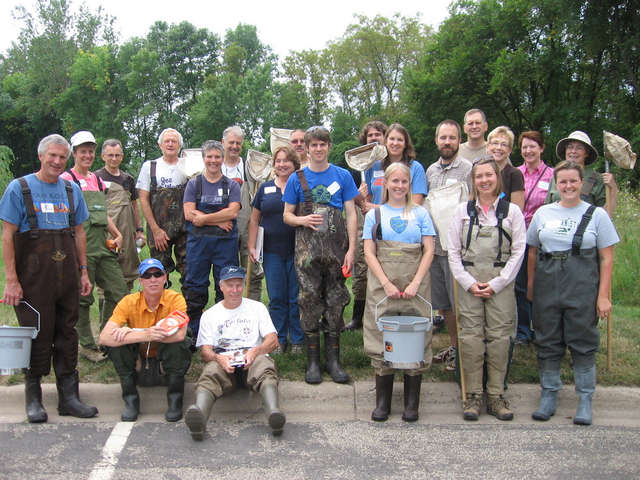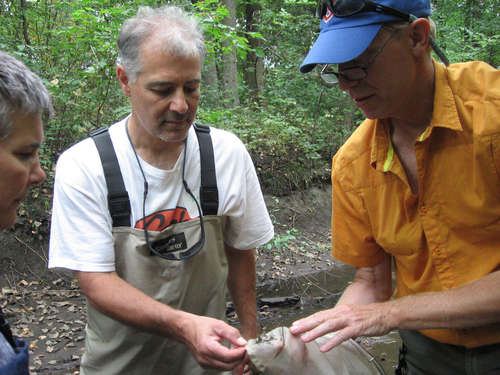Stream Health Evaluation Program (SHEP) still on course after 7 years

SHEP volunteers gather for a group photo before field training in August 2012.
The Stream Health Evaluation Program, or SHEP, began in 2006 as a way to engage citizen volunteers in biological monitoring of streams within the Rice Creek Watershed District (RCWD). Approximately 30 volunteers, many of whom return year after year, receive extensive training to collect and identify macroinvertebrates (aquatic bugs) at nine different sites, two of which were new locations in 2012. Because these organisms grow, develop and reproduce in streams, they act as useful indicators of water quality -- the number, type and diversity of macroinvertebrates found provides important information about the ecological health of a stream. The data collected by volunteers each fall is quality-checked and analyzed by professionals at Fortin Consulting, and then shared with RCWD and the public.

SHEP volunteers stop to examine what theyve found living in Clearwater Creek.
Hardwood, Clearwater and Rice Creeks are the three major water systems in the Rice Creek Watershed District, and all three are listed as impaired waterways, meaning pollution levels exceed standards set by Minnesotas Pollution Control Agency (MPCA). To improve water quality, as well as fish habitat and recreation opportunities, RCWD has completed a variety of restoration projects in and around these streams over the last decade. Its likely that these restoration efforts are part of the reason overall stream health is improving. The RCWD continues to monitor its lakes, streams and stormwater, and conduct additional restoration as needed.
SHEP itself continues to be a model volunteer stream-monitoring program, providing decision-makers with important and reliable data (consistently over 90% accuracy) while building lasting relationships across local governments, state agencies and community residents. It also happens to be a lot of fun! Every fall, SHEP volunteers spend several days in the field collecting samples, and many hours in the lab identifying the tiny creatures theyve found. Volunteers report that they love learning about stream ecology, and also value the friendships theyve formed over the years of working with other volunteers.
The full 2012 SHEP Final Report is now available online.
If youd like to learn more about SHEP, or if you live in the Rice Creek Watershed and think you might want to volunteer with SHEP in 2013, visit our SHEP program page or contact Katie Clower at 651-222-2193 x23 or through our contact form.
Thanks to the Rice Creek Watershed District, Fortin Consulting, and the MPCA for helping to make this program possible!